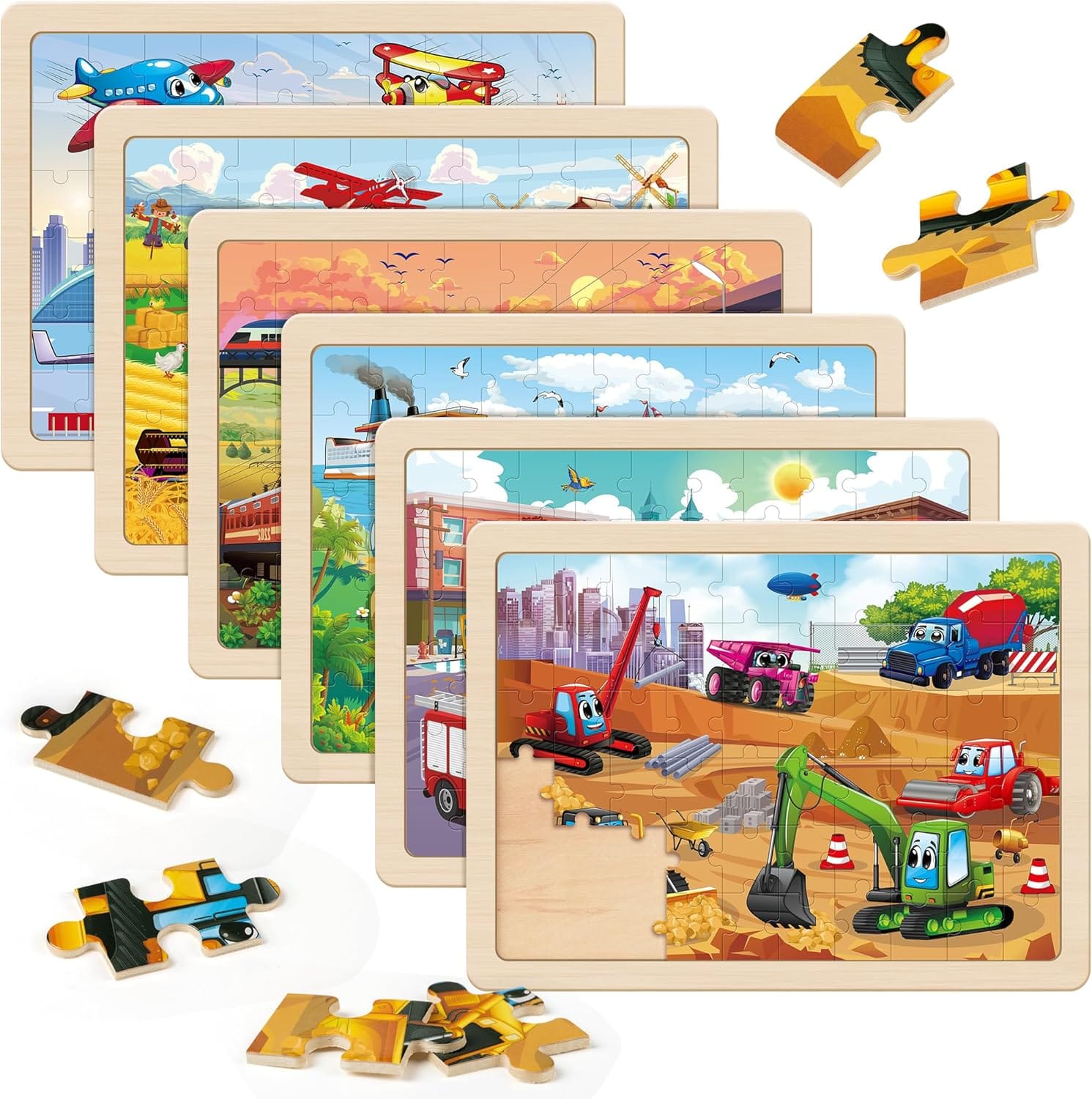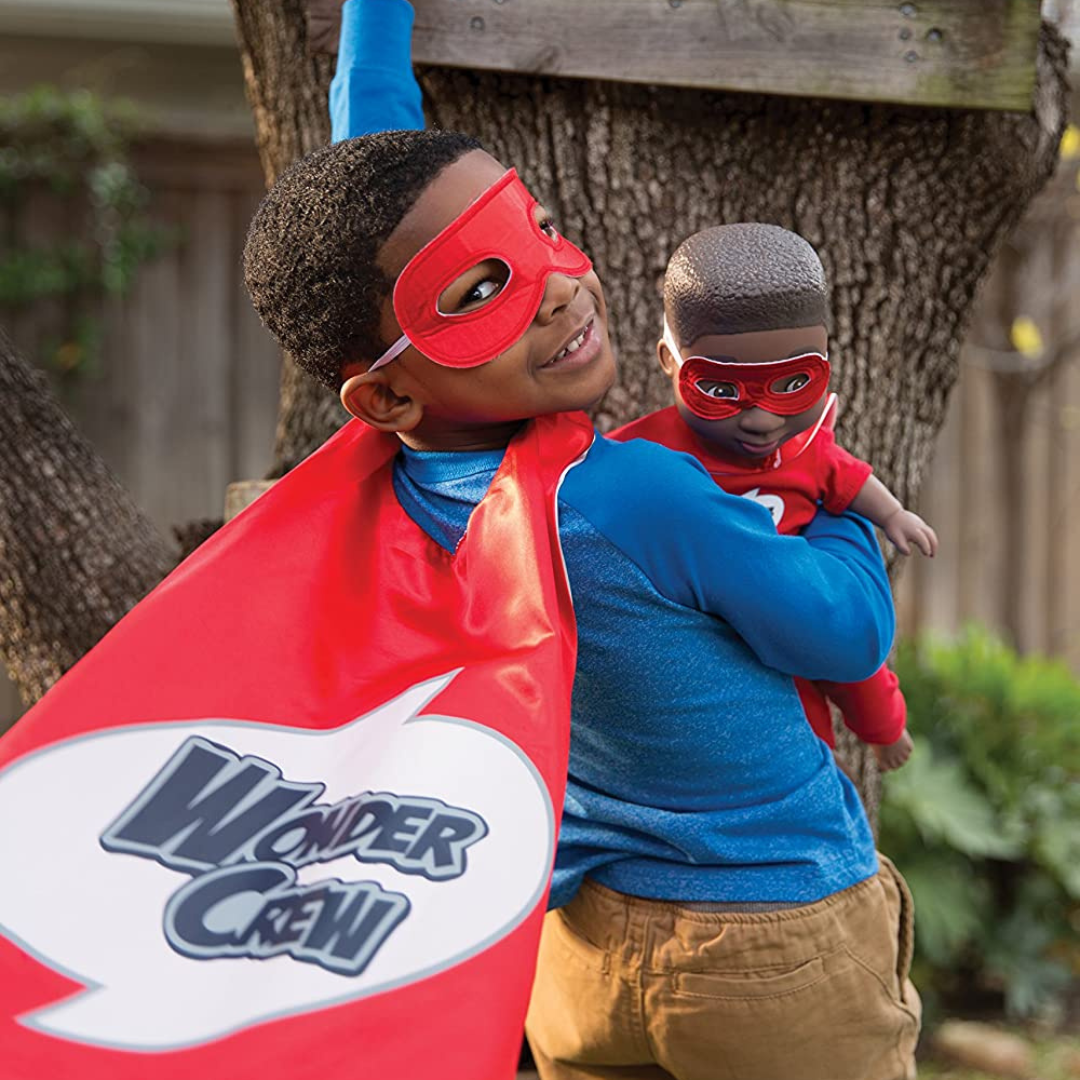Is your child asking to play an RPG (role-playing game)? Do you like the idea of playing a game, but you aren’t a dungeon master? Trust me, I understand.
Role Playing Games can be great for kids to explore story development, character building, and problem-solving. Dungeons & Dragons, the most famous of these games has been around since the 70s and is based on fantasy stories like Lord of the Rings. This style of game can be intimidating to learn and require a bit of start-up and investment (all those dice!)
Often, one player is the Dungeon Master (or DM for short) and is sort of in charge of guiding the other players along. Usually, players start as characters and work their way up to being a DM. So if you don’t know someone who plays already, it can feel overwhelming to get started.
What if you just want to try this style of game with your child but do not want to become an expert at calculating hit points and charisma bonuses? If you have never played this kind of game yourself and don’t know how to DM, what can you do? Fortunately, there are some games that are easier to play, that may help you satisfy your child’s desire for complex gameplay.
My family has played these games and I am going to review them based on my family’s experience. Your mileage may vary.
Munchkin
 Munchkin is a card game that allows each player to create a character, gather tools and armor, and use them to beat monsters that stand in your way. While reading the rules took me a few minutes, learning the game was not hard. The cards make gameplay straightforward and every turn follows a straightforward pattern. Every turn you “open a door” by picking up a door card and following the instructions. If it is a monster, you fight it. And if you win the fight, you get the treasure.
Munchkin is a card game that allows each player to create a character, gather tools and armor, and use them to beat monsters that stand in your way. While reading the rules took me a few minutes, learning the game was not hard. The cards make gameplay straightforward and every turn follows a straightforward pattern. Every turn you “open a door” by picking up a door card and following the instructions. If it is a monster, you fight it. And if you win the fight, you get the treasure.
My favorite part of this game is that you can ask other players to help you when the monster you face is just too challenging to meet on your own. As you progress through the game, you win treasure, level up, and expand your character’s personal inventory of armor and weapons. The items have silly, fun names, and everything about them is on the cards.
If your child is easily frustrated by games but you want to play anyway, I recommend stacking the deck of monsters so that they get gradually harder the longer you play. As you level up and gain weapons, you’ll be better able to face down a dragon than when you start the game. The one part of a RPG this game lacks is the plot line. You are basically just defeating monsters for treasure. However, many people feel this is the best part of an RPG and are very happy with this form of gameplay.
This game is also one with multiple expansion packs, so if you find you’ve faced every monster, you can just add a pack and keep playing.
Choose Your Own Adventure Game
 Did you ever read the old “Choose Your Own Adventure Books“? Those have been turned into games now. The game comes with a stack of cards for each chapter of the book, and extra cards with challenges, tools, and bonus material. While you don’t get to create a character with this game, you do get to make a lot of choices while following a storyline. Some choices can lead to your death, just like in the books. However, gameplay continues by returning to earlier in the story so you can make a different choice.
Did you ever read the old “Choose Your Own Adventure Books“? Those have been turned into games now. The game comes with a stack of cards for each chapter of the book, and extra cards with challenges, tools, and bonus material. While you don’t get to create a character with this game, you do get to make a lot of choices while following a storyline. Some choices can lead to your death, just like in the books. However, gameplay continues by returning to earlier in the story so you can make a different choice.
I’ve been playing the House of Danger version with my 13-year-old and it has worked well as a 2 player game for us. Because there are so many cards, we have divided who reads what and take turns deciding what to do. However, I don’t think this game would be fun with multiple children who like to argue. Gameplay with this game is not fast, and you may want to plan to play one chapter at a time. Honestly, I’m counting it as literature this week, because we are reading a book!
If your child doesn’t mind being assigned their character, the plot line in this game is well developed with lots of chances to make choices. You can even choose to go back and explore a chapter more, once you find the end of the section. I don’t think this game is going to have high replay value for us. However, playing through it once is taking enough time that I feel like I’m getting my value in total gameplay time. My son is enjoying the part where we get a chance to look for items we can take along and use later in the book to help us in our quest.
As an occupational therapist, I really the see value in playing this game with a child who struggles with decision-making. There are a lot of choices to make, some problem-solving, and many twists and turns to the book to discuss as we go. If your child is really craving a long slow game with a lot of plot, this one has you covered.
Escape The Room
 Another game with a good story and puzzles to solve is Escape The Room: Mystery at the Stargazer’s Manor. This game is designed to simulate the real-life Escape Room experience without you having to go anywhere. There are a few different companies that make these, but this one by ThinkFun is my favorite. The mystery is engaging but not scary, the puzzles are challenging but reasonably achievable.
Another game with a good story and puzzles to solve is Escape The Room: Mystery at the Stargazer’s Manor. This game is designed to simulate the real-life Escape Room experience without you having to go anywhere. There are a few different companies that make these, but this one by ThinkFun is my favorite. The mystery is engaging but not scary, the puzzles are challenging but reasonably achievable.
My family enjoyed the specific challenges in this game. However, we decided to pause our timer and take a break after playing about half an hour. The ability to take a break for a snack when everyone was starting to feel frazzled really improved our enjoyment. We came back to it and were able to re-start our timer and pick up where we left off. I actually found this game more enjoyable than the real escape rooms we’ve done, because we could see how many challenges we would face and that made it easier for the kids to share the puzzles, knowing there were more to solve. Passing the decoder wheel and envelopes to each player by turns also helped with this.
These kinds of games can be difficult with too many people playing, and it can be hard for younger siblings to participate if you don’t make a point of giving them a turn. I wouldn’t call this an RPG, but it can meet the craving for a different and interesting game style. Unfortunately, these games don’t have much replay value. This particular game we were able to “reset” and pass to another family, but many escape room style games have some disposable parts, so they can’t be replayed.
If you are worried your family won’t enjoy the game if they are under a time crunch, you can play untimed or give yourself extra time beyond the suggestion. You “lose” these kinds of games by not completing them in the designated time frame, but you can ignore that part of it and just work on it until you solve all the puzzles and escape the room.
Taking it up a notch
 If you are really looking for that D&D experience, character building with monsters, and a plot, but don’t want to learn to DM, Dragonfire by Catalyst Game Labs is what you are looking for. This is as D&D as you can get without actually having to be a dungeon master.
If you are really looking for that D&D experience, character building with monsters, and a plot, but don’t want to learn to DM, Dragonfire by Catalyst Game Labs is what you are looking for. This is as D&D as you can get without actually having to be a dungeon master.
Dragonfire is a turn-based RPG where the scenario and all the twists and turns are laid out in the cards and a guidebook. Much like Munchkin, you fight the monsters presented and work together with your team to beat them. It is cooperative, you all need to discuss your strategy for beating the monsters and work together to complete the mission.
But the key to this game is that you build your character and play with that character from game to game, getting stronger and more skilled as you go. You add traits and abilities, weapons, and magical items to your character card after each game so you can use them in the next round of the story.
Now, this game is big and complicated. There are lots of pieces, lots of cards, and even more rules. Dragonfire can be hard to learn. There are some tutorials online since this is a hugely popular game with the tabletop gaming community. And it has expansion packs if you need more adventures.
I recommend this game for families with teens, 14 and up, who like to play role-playing video games and want to learn more about D&D.
Easy and Fun
I hope if your child has been asking to learn Dungeons & Dragons and you aren’t up for it, that these options help. Playing games that encourage deeper thinking is wonderful for kids to work on problem-solving and reasoning skills without the high stakes of real life. Even if your kids lose the game, they are winning at learning how to navigate complex situations. Do you have another RPG you love for kids? Let us know in the comments!
P.S. Here are the links to the games I’ve recommended today.
 | by Steve Jackson Games |  | by Z-Man Games |
 | by ThinkFun |  | by Catalyst Game Labs |
** Our business does receive a small percentage of sales made through links on this page to Amazon as part of the Amazon Affiliates program and through links to Bookshop as part of the Bookshop Affiliates program. If you chose to purchase through one of these links, please know that we appreciate it. Thank you!





I would add a warning that there are a few wildly sexist nasty surprises in the original edition of Munchkin (the kneecaps of persuasion the worst of it , but some other BDSM-adjacent pictures , etc). I literally threw them out of my set. It didn’t affect game play. They also have a weird thing in the rules about gender , switching gender , and losing a turn due to gender confusion.
HOWEVER – again , it doesn’t affect gameplay or unbalance the game to just remove that stuff. Some of the other sets are expansions , but there are other stand-alone versions that leave this crap out. We love the Grimm Tidings Munchkin.
Two others I would recommend: Legacy of Dragonholt and Monster of the Week.
Dragonholt is a GREAT story. It’s sort of basically a long read-aloud choose-your-own-adventure , with mechanisms built in to make sure everyone gets equal turns in making decisions for the party. Everyone gets to set up and develop their character , the traits they choose and develop affect gameplay… But the DM job is literally just reading , and someone marks off stuff on a sheet of paper. VERY fun for families , esp mixed age , and a great starter of how an RPG would go.
Another RPG that has much simpler mechanics than D & D is “Monster of the Week.” Similar elements , but the dice are just regular 6-sided , and a lot less moving parts. More storytelling , less looking up stats in various guidebooks.